Common Orthodontic Problems
Every case is different—but that doesn’t mean every orthodontic problem is different. There are a number of common orthodontic problems we see in new patients. The severity of your condition, the specific symptoms you experience, your lifestyle preferences and your ultimate smile goals are what makes your case unique!
Once Dr. Nease, Dr. Thomas, or Dr. Horvath completes your complimentary exam, we’ll discuss all of your treatment options with you to help you determine the most effective route to reach your goals.
Underbite (Malocclusion)
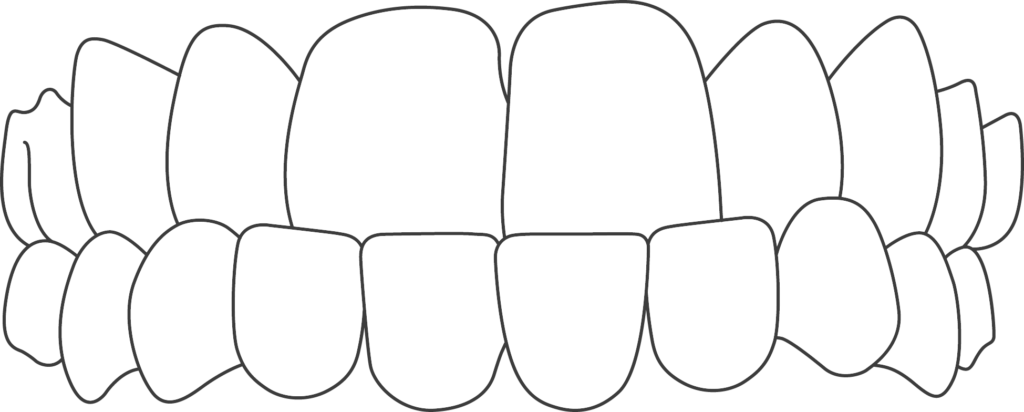
With an underbite condition, the lower jaw extends further than the upper jaw. As a result, the bottom teeth actually bite together in front of the top teeth. This condition can contribute to an undesirable appearance and can cause discomfort in the jaw when chewing and talking.
Underbites are often caused by genetics, but they can also result from other childhood habits, and they can be effectively addressed in kids as young as 7.
Overbite (Malocclusion)

An overbite is the opposite of an underbite. When the upper jaw extends further than the lower jaw, this is called an overbite. In severe cases, the lower teeth can hit the roof of the mouth, causing considerable pain and difficulty chewing.
Overbites can be caused by genetics, but this condition can also result from thumb sucking and other childhood habits.
Crossbite (Malocclusion)
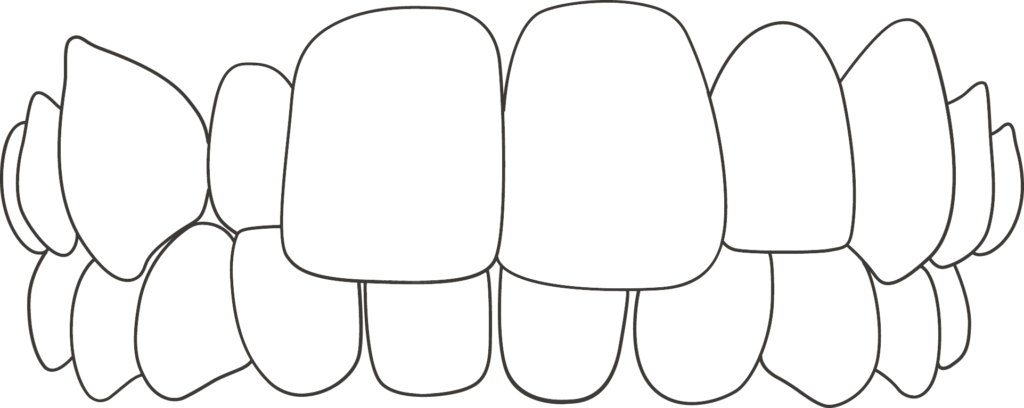
A crossbite condition is present when the upper teeth rest within the lower teeth or completely outside of them. This often leads to a misalignment of the jaw and various complications, such as a temporomandibular joint (TMJ) disorder.
This condition can also result from genetics, irregular tooth eruption, mouth-breathing while sleeping, and thumbsucking late into childhood.
Open Bite (Malocclusion)
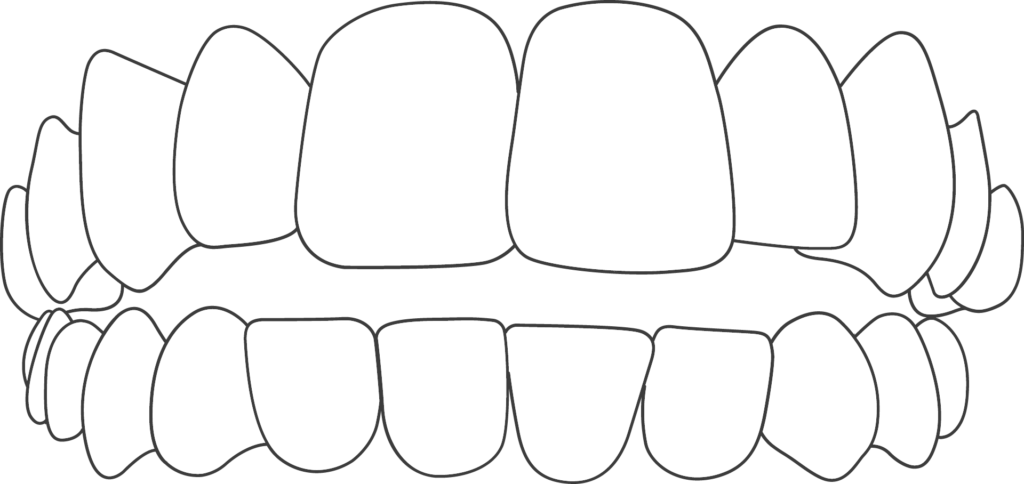
An open bite is characterized by a misalignment between the top teeth and bottom teeth. With a healthy orthodontic condition, the top teeth overlap the bottom teeth. When a person has an open bite, the top and bottom teeth don’t meet.
This problem is typical for children who sucked their thumb late in their childhood or thrust their tongue against their teeth. It can also indicate a skeletal development problem or TMJ syndrome.
Protrusion (Malocclusion)

A protrusion, or an overjet condition, is present when the upper front teeth protrude/ stick out too far forward. On occasion, this can be caused by the lower bottom teeth not protruding as far as they should.
Sometimes called “buck teeth”, overjets appear when the jaw bone is underdeveloped and can be caused by thumbsucking, tongue-thrusting and similar habits during childhood.
Spacing Issues
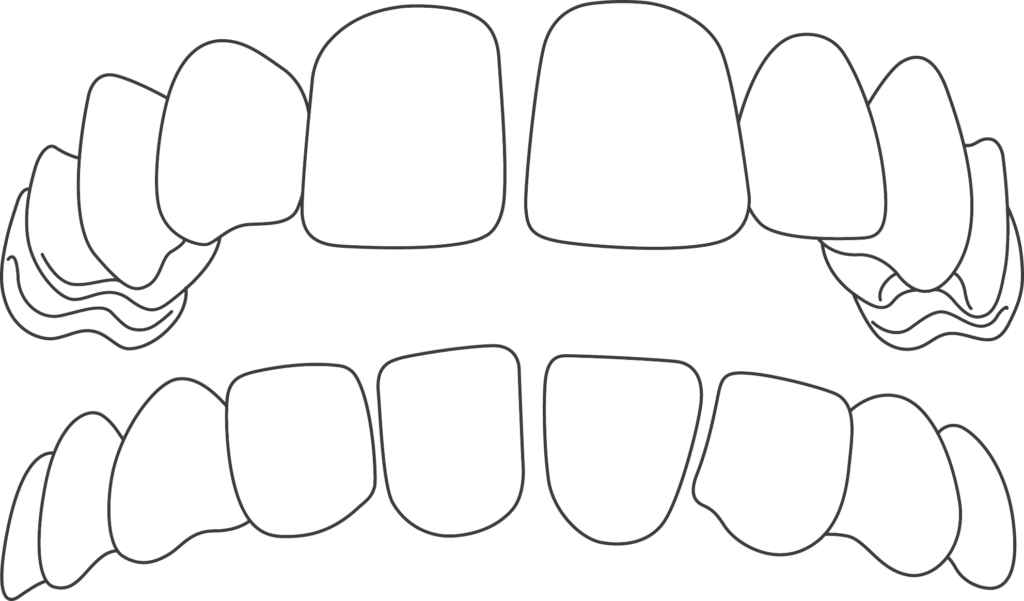
We often see new patients who have gaps between their teeth. This may be caused by missing teeth or excessive space in the mouth. Like other common orthodontic problems, this condition may also result from childhood habits, such as tongue-thrusting.
Spacing may be present between two teeth or multiple teeth and can affect one or both dental arches.
Crowding Problems
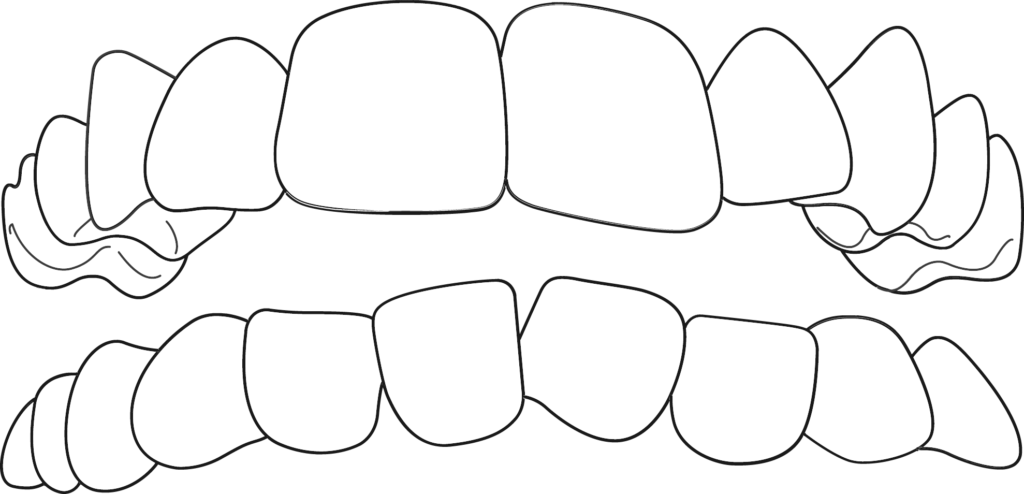
When teeth are overlapping or crooked, this can indicate crowding. Crowding often occurs when the jaws aren’t wide enough to support all teeth. If the teeth are trying to erupt in a dental arch that’s too narrow and doesn’t have sufficient space, the teeth will overlap each other and rotate as they’re developing.
A palatal expander may be used during childhood to widen the jaw bones and help create the necessary space for teeth to erupt in a better position. In severe cases, the extraction of baby or even permanent teeth may be required to correct this condition.
Problems with Midline Alignment (Malocclusion)
The alignment of the midline is related to the fit of the back bite, as opposed to the front bite. Midline misalignments can cause significant problems with the jaw function and regular dental functioning as they can be a sign of greater issues with the bite overall.
This condition is commonly caused by missing teeth, irregularly sized teeth (oversized or undersized), premature loss of baby teeth, crowded teeth and jaw misalignment.

How We Treat Common Orthodontic Problems
We take a customized approach when treating common orthodontic problems. The most effective treatment method will depend on each patient’s unique orthodontic problems, the severity of those problems, and every detail in between!
Our orthodontists are some of the most experienced orthodontists in the state. We pay attention to every detail and we genuinely care about your happiness. We’ll work with you to create a custom treatment plan and a payment plan that fulfill your needs.
Due to our orthodontists’ years of experience, we can treat most cases with advanced Damon™ Clear braces, Spark clear aligners, or Invisalign® clear aligners. The choice of treatment often comes down to our patients’ preferences! Once we complete your smile assessment during your complimentary consultation, we’ll explain your current orthodontic condition and advise you on the most efficient track to a beautiful smile.
Have any questions about common orthodontic problems?
Please don’t hesitate to give us a call at any of our locations in West Spartanburg, East Spartanburg, Gaffney, Duncan, or Union. We believe patient education is the foundation to a successful treatment! We will always take the time to explain your treatment to you, throughout every phase.
If you haven’t received your complimentary exam yet, we encourage you to request yours today! Your first visit to our office is no-obligation, no-risk, and no-commitment. We want you to experience the Nth Degree in orthodontic care, without any financial risk.